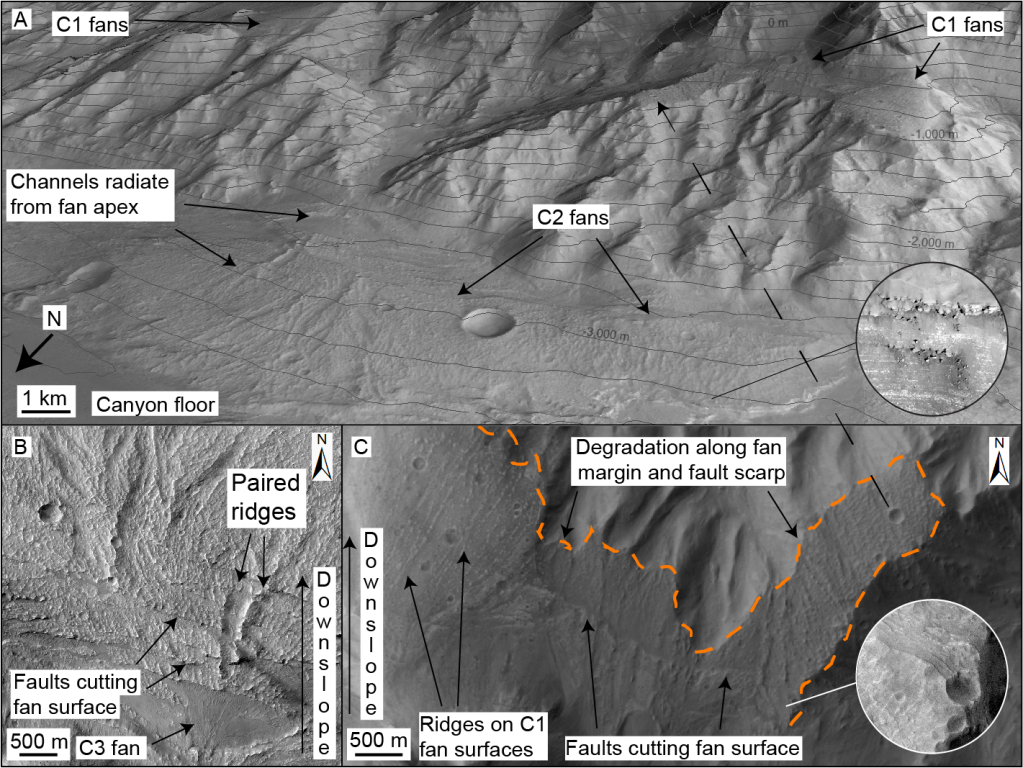Post contributed by Ben Man, The Open University @AstroBenjamin
Mercury is a contracting world as evidenced by the abundance of shortening structures observed across the surface of the planet (Image 1). Global contraction as a result of secular cooling of the planetary interior is most likely responsible for widespread compressional tectonism with shortening structures seen cutting all surface materials at all latitudes and longitudes. Shortening structures are accepted as the surface manifestation of thrust faults and folding. Grabens, such as those observed in the images (Image 1-3), are secondary structures found on top of parent shortening structures. The presence of these grabens provide evidence for recent widespread tectonism on Mercury, confirming that global contraction is ongoing.

Image 1: Aspect view of Alpha Crucis Rūpes with horst and grabens present in the foreground of the image. Alpha Crucis Rūpes is located in H09 Eminescu, an equatorial quadrangle. The image is comprised of the H09 south east high incidence west mosaic tile and five individual narrow-angle camera frames (EN0231136925M, EN0231136927M, EN0231136960M, EN0231136962M, EN0231136998M). The image has not been vertically exaggerated and the scale bar is computed for the centre of the image. Image source: NASA/JHUAPL/CIW made by Benjamin Man. Image frames and mosaic tiles are available from NASA’s Planetary Data System Geosciences Node (https://pds-geosciences.wustl.edu/) and the Cartography and Imaging Sciences Node (https://pds-imaging.jpl.nasa.gov/).
(more…)











